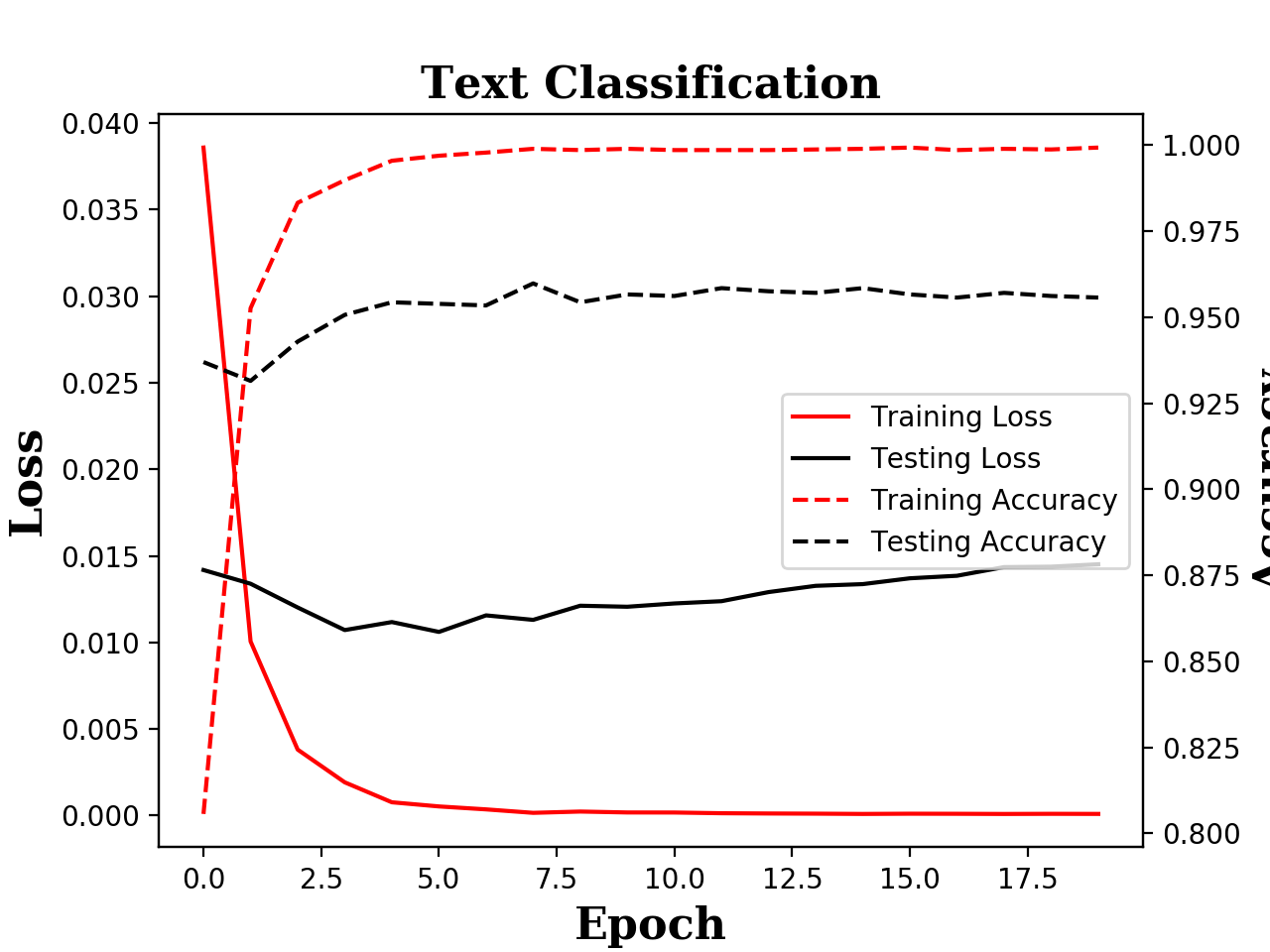- data/
- data/train_txt/*.txt
- data/train_txt.txt
- data/train_label.txt
- data/test_txt/*.txt
- data/test_txt.txt
- data/test_label.txt
| file | description |
|---|---|
| data/train_txt/ | training text fold |
| data/test_txt/ | testing text fold |
| data/train_txt.txt | file name list for training text |
| data/test_txt.txt | file name list for testing text |
| data/train_label.txt | label list for training text |
| data/test_label.txt | label list for testing text |
Environment: python 3
Requirements:
pytorchrunning example:
python main.pyWe use the following dataset for our example: R8 Dataset.link.
- This code is largely inspired from the original repo: jiangqy with a few modifications:
- Use the Adam optimizer
- Custom dataloader
- Select the right output after the LSTM/GRU (masking)
- Attention layer included, from here. The attention mechanism is not the full one though, it is a simplified version. No new parameters are learned in the process as it just combines the rnn output with the hidden states using matrix multiplications. This simplified attention mechanism still provides a significant improvements over no attention at all.
- The entire sentences are used. If you want to cap the number of words, please, update the parameter sentence_len = None to sentence_len = n. You should get pretty descent results even with only 32 words max per sentence.
- There is no early stopping. The code just runs for n epochs and saves the results at the end. But it is easy enough to select the best model based on the evaluation phase.
